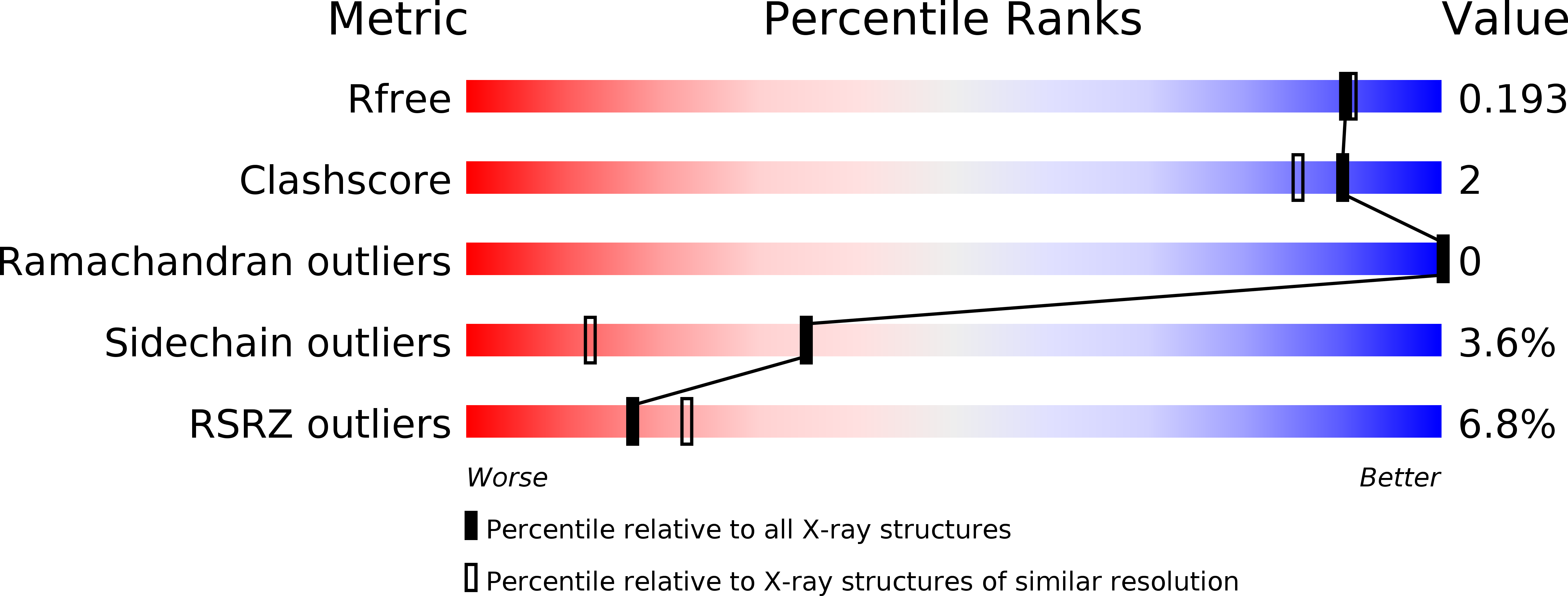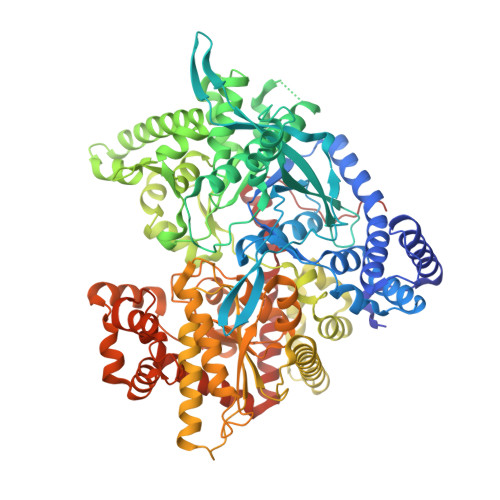van der Waals interactions govern C-beta-d-glucopyranosyl triazoles' nM inhibitory potency in human liver glycogen phosphorylase.
Kantsadi, A.L., Stravodimos, G.A., Kyriakis, E., Chatzileontiadou, D.S.M., Solovou, T.G.A., Kun, S., Bokor, E., Somsak, L., Leonidas, D.D.(2017) J Struct Biol 199: 57-67
- PubMed: 28483603
- DOI: https://doi.org/10.1016/j.jsb.2017.05.001
- Primary Citation of Related Structures:
5LRC, 5LRD, 5LRF - PubMed Abstract:
3-(C-Glucopyranosyl)-5aryl-1,2,4-triazoles with an aryl moiety larger than phenyl have been shown to have strong inhibitory potency (K i values in the range of upper nM) for human liver glycogen phosphorylase (hlGP), a pharmacologically relevant target for diabetes type 2. In this study we investigate in a comparative manner the inhibitory effect of the above triazoles and their respective imidazoles on hlGPa. Kinetic studies show that the imidazole derivatives are 6-8 times more potent than their corresponding triazoles. We also seek to answer how the type of the aryl moiety affects the potency in hlGPa, and by determination of the crystal structure of rmGPb in complex with the triazole derivatives the structural basis of their inhibitory efficacy is also elucidated. Our studies revealed that the van der Waals interactions between the aryl moiety and residues in a hydrophobic pocket within the active site are mainly responsible for the variations in the potency of these inhibitors.
Organizational Affiliation:
Department of Biochemistry and Biotechnology, University of Thessaly, Biopolis, 41500 Larissa, Greece.

















